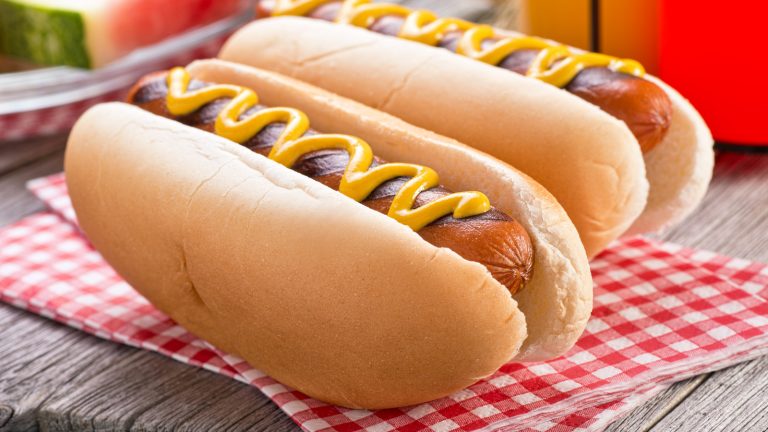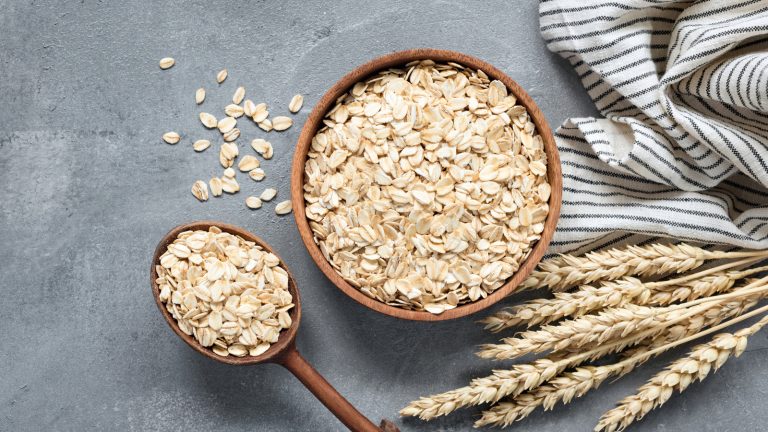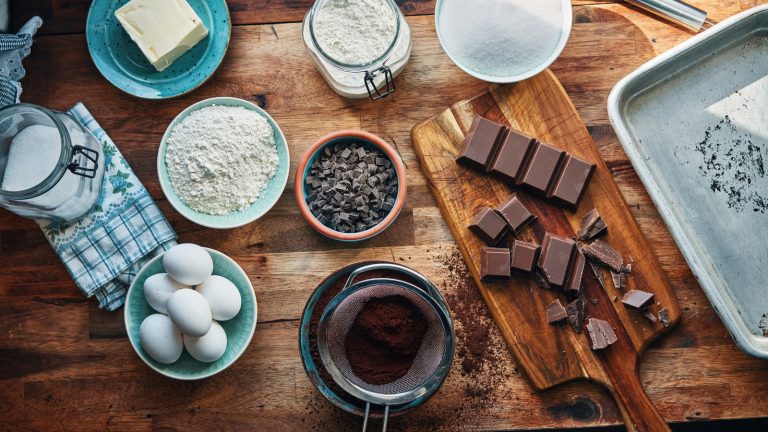The pop of a soda can opening, the hiss of a metal cap lifted off a glass bottle — those must be some of the sweetest sounds imaginable on a hot summer’s day. What if we told you that your favorite drink — that hit of dopamine you expect to come right after that sound — was discontinued? Today, we take a trip down memory lane and examine some vintage sodas from the ’80s that we wish we could drink today.
As a drinks blogger on My Mocktail Forest, I’ve had my share of sodas. Whether they are probiotic or full of caffeine, there are just some that stick with you throughout the years. Your stomach craves them, and your mind keeps wanting to taste that first sip again. Unfortunately, over the years some of my favorites have gone out of production — and the same happened to many others throughout the decades.
In this article, we profile seven forgotten vintage sodas from the ’80s that we’d love to drink yet again. Maybe some of these will be revived one day, like the Original New York Seltzer. Until then, we can only dream of their comeback while drinking similar, yet subpar modern sodas.
New Coke
When a soda giant decides to completely revamp its signature drink, it could go one of two ways — alienate its base, or gain new followers. Unfortunately for Coca Cola, its release of New Coke in 1985 went horribly wrong, and it alienated pretty much everyone, old and new alike.
At first, it all seemed like a good idea for a company looking to stick it to the competition. New Coke, modeled to taste more like its biggest competitor, Pepsi, did extremely well in test taste groups. By the mid-’80s, the heads of Coke felt so good about their new product that they completely rejected the original recipe, discontinuing the original Coca Cola brand across the United States — but the public did not approve.
Only weeks after its release, the company reported getting up to 5,000 complaint calls a day, a number that grew to 8,000 within two months. Within three months of its release, the old Coca Cola came back, revamped as Coca Cola Classic. New Coke was left in the dust by sales, received another revamp in 1990, and finally abandoned in 2002. Thus, New Coke became No Coke, and went in history as one of marketing’s biggest blunders.
Jolt Cola
When a medical student decides to endorse an energy drink, you know it’s bound to be electric. Launched in 1985, Jolt Cola was the brainchild of a father and son team from Rochester, New York, that wanted to make a true vintage soda — one sweetened with real sugar, and with twice the caffeine of other, similar soft drinks.
In 1986, Gay Mullins, a retired research associate from the University of Washington Medical School, was deeply and vocally dissatisfied by the then-newly released New Coke. He decided to publicly endorse the new beverage brand, and he was far from being the only one.
Jolt Cola grew to become a major household brand until it went bankrupt in 2009 over a custom, and expensive, bottle design idea. To this day, Jolt Cola fans remain steadfast, and a market exists for even the most fringe of Jolt paraphernalia. It even had an appearance in “Jurassic Park,” prompting many viewers to wonder whatever became of Jolt Cola. The good news? Thanks to investment by Redcon1, Jolt is getting a comeback, but it’s going to look quite a bit different, use only artificial sweeteners, and have even more caffeine than the original, already highly caffeinated number. Will the newly released Jolt Cola even be comparable to the original and succeed in winning back its market share, or will it go the way of many other revamps? Only time will tell.
Hubba Bubba Soda
When a well-known bubble gum company decides to turn its flavor into a pop, kids are going to be all over it, but will adults like it? That is the question — and the answer proved to be only a temporary yes for Hubba Bubba Soda.
Launched by Wrigley in 1988, Hubba Bubba Soda tasted like the brand’s original pink bubblegum — sweet, sticky and colored like Pepto Bismol. It was allegedly based on creator Steve Roeder’s experience tasting a bubblegum-flavored snow cone syrup.
Despite winning fans of various ages, this soda didn’t stick around for long. The gum-flavored soda was discontinued in 1990, and it’s probably never coming back, at least in its original format. That being said, some brands have released other bubble gum-flavored sodas over the year, and reviewers are saying they are giving major Hubba Bubba nostalgia vibes. Bazooka Gum soda is probably the most prominent amongst these remakes, so if you want to know what Hubba Bubba Soda tasted like, this may be your best chance to relive the glorious days when you could get a pink-colored soda in every corner store.
Tab
When a drink giant decides to take a stab at diet drinks, it’s probably going to become the basis of one fad diet or other — and for many in the 1980s, Tab soda was a key component in their weight loss plan.
Though it was not the first diet soda — that honor is reserved for No-Cal in 1952, the diet soda you’ve probably never heard of — when Coca Cola released Tab, as in, “keeping a tab on your weight,” the world listened. It was extremely popular throughout the 1980s, when it was re-branded as pink and an hourglass-shaped glass was released as part of its promotional effort for women. However, Coca Cola shot itself in the foot in the ’80s by creating its direct competitor due to the idea that men needed a more “masculine” drink, Tab began rapidly losing popularity. It continued to slowly die over the next two decades, with a small but loyal fan base.
Tab was discontinued in 2020 after being left far behind by Diet Coke’s sales. Over its decades of existence, Tab has become so popular, its impact still continues almost a generation after its discontinuation. A group of superfans has been calling for its comeback tour using the hashtag #SaveTabSoda, garnering thousands of views on Facebook and TikTok. Who knows? Maybe one day you’ll be able to taste one of the OG diet sodas.
Slice
When the world’s second biggest drink company decides to launch an iconic flavored soda, it’s likely going to win some fans.
Slice Soda was first launched by PepsiCo in 1984 in direct competition to the massively popular lemon-lime flavored brands Sprite and 7UP. What was interesting and unique about the release was Slice’s use of real fruit juices. The public guzzled it up — by 1987, Slice lived up to its name to win a major slice of American the soft drink market.
However, the hype didn’t last long. Other competitors latched onto the real fruit juice trend and began releasing their own versions. Then, budget cuts meant Slice had less money to spend on advertising, which heretofore was one of its main modes of acquiring new fans. To date, it’s questionable whether its host of flavors were all as successful as the lemon-lime Slice.
Slice Soda remained in production for over a decade, but its popularity never rebounded. Recently SujaLife bought the rights to the soda brand and announced its revamp as more a of a healthy probiotic fruit soda, but early tasters are sewing seeds of doubt on whether it will taste the same.
Life Savers Soda
When a popular candy brand launches its namesake soda, there are bound to be lovers and haters. Even decades later, so loyal fans are clinging to the life-saving raft of Life Savers Soda.
Life Savers Soda was launched in the mid-’80 by Planters LifeSavers Company (then owned by Nabisco). It was a bold attempt to capture the iconic flavors of the brand ring-shaped candy, coming in hot with flavors like cherry, orange, pineapple, lime, and fruit punch. It came in colorful cans and bottles, but ultimately, failed to capture the attention of the adults whose nostalgic feelings it targeted. Perhaps you should really be grateful you never got to try the liquid form of Life Savers.
Despite initial market enthusiasm, Life Savers Soda struggled to maintain interest beyond its novelty appeal. It did well in taste tests, but tanked in sales, criticized as having an artificial sweetness and a chemical after-taste. Life Savers Soda quietly disappeared from the stage by 1988, and most people totally forgot it ever existed.
7Up Gold
When a soda brand decides to completely reinvent its identity, risk is inevitable. For 7UP, the gamble on 7UP Gold became one of the most fascinating beverage blunders of the decade. If you think of lemon lime soda, you are undoubtedly picturing a transpired beverage. Maybe the packaging is green, or yellow. Mostly, the soda itself has undeniable similarities — that is, until 7UP Gold came along.
When it was launched in 1988, 7UP Gold was a radical departure from the clear, crisp lemon-lime soda that consumers have come to know and love. Instead, this amber-colored beverage was spiced with cinnamon, ginger, and apple flavors, creating something that tasted more like a hybrid of ginger ale and apple cider than anything resembling traditional 7UP. Even more shocking to loyal fans — it contained caffeine, betraying the “never had it, never will” caffeine-free slogan that defined the original 7UP brand for decades.
The marketing team pushed hard with a $10 million advertising campaign and what appeared to be a foolproof plan, but unfortunately, it couldn’t pay to clear consumers’ minds about its drink’s murky color. Within a year, 7UP Gold fizzled out completely, becoming one of the shortest-lived major soda launches of the era. Some fans continue to hold a torch for this soda on Reddit and social media.





